A dynamic coastal neighbourhood synonymous with leisure, luxury and nightlife, Copacabana is characterised by million-dollar penthouses, stunning neoclassical buildings and tiny apartments set against a magnificent backdrop of jungle-clad mountains in Rio de Janeiro. From its humble origins as a small fishing village, the "Princess of the Sea" is now a leisure seeker's paradise, bursting with restaurants, nightclubs, bars and hotels, and emits a lively, effervescent energy, perfect for the social traveller. To learn its history, visit Forte de Copacabana, a fort and museum that traces the early days of the Portuguese colony through to the mid-19th century. Art enthusiasts will appreciate a visit to The Eva Klabin Foundation (Casa Museu Eva Klabin), a historical home of famous art and antique collector Eva Klabin that houses over 1000 art pieces from all over the world. A visit to Copacabana is incomplete without the world-famous Copacabana Beach, a 4-kilometre stretch of golden sand dotted with brightly-coloured umbrellas, bars and a popular playground for watersports, football, volleyball, or simply lazing in the sun.
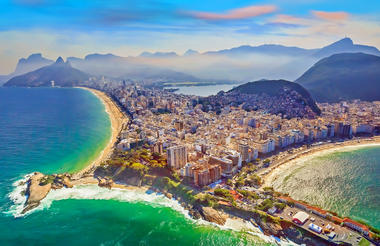
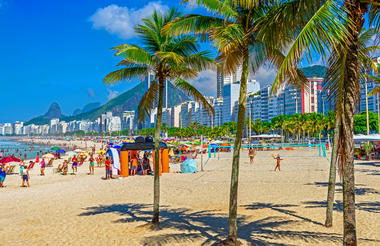
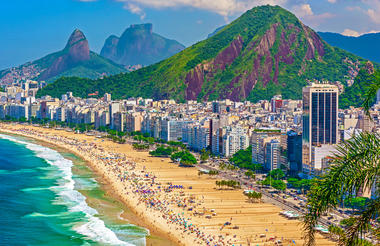
Brazil’s second-largest city and one of the world’s most popular tourism destinations, Rio de Janeiro is renowned for its beautiful beaches, vibrant culture, the iconic Sugar Loaf Mountain and the massive, majestic statue of Christ atop the Corcavado peak. The highlight of Rio’s social calendar is Carnaval, in the weeks leading up to Lent, when the city becomes a riot of colour, music and festivities, with thousands of costumed revellers parading through the street in what the locals call the ‘Greatest Show on Earth’.



Sao Paulo is Brazil’s largest and most populous urban centre, home to roughly 20 million people in the metropolitan area alone. The capital of Sao Paulo State and the country’s unofficial business capital, the city is also known for its effervescent culture, with myriad entertainment options and a colourful nightlife. Highlight attractions of the city include: the Avenida Paulista, with its commercial epicentre presenting a wide array of shops, restaurants, bookstores and art exhibitions; Bixiga, a ‘little Italy’ known for its theatre scene and vibrant nightlife; the Chinatown district of Liberdade; and Ibirapuera Park, popular for its walking and jogging trails, three museums, free concerts and gorgeous Japanese garden.
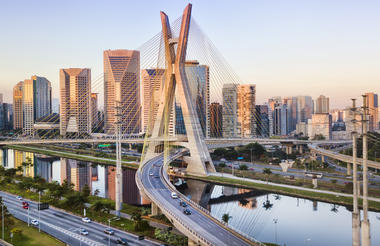
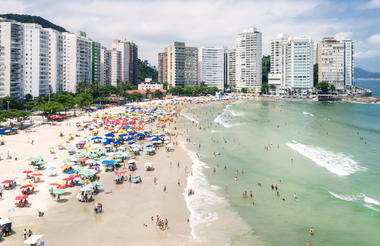
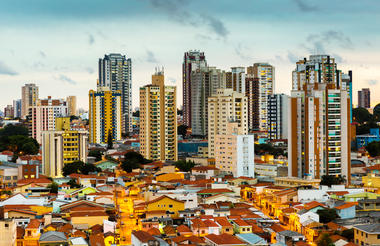
Resting at the confluence of the Parana and Iguazu rivers, Puerto Iguazu is a charming tourist city that serves as the gateway to Iguazu Falls on the Argentinian side of the border. It is surrounded by red rocky landscape interspersed with verdant forest inhabited by abundant wildlife. The city is a popular tourist destination and draws visitors from around the globe to visit the Iguazu National Park and its breathtaking waterfalls. Visitors can also explore the spectacularly scenic surroundings through a variety of activities including: jumping on one of the many tours on offer, enjoying an array of outdoor activities, visiting the Guira Oga - 'The House of Birds', and soaking up the views from the Hito de las Tres Fronteras, a magnificent natural park.



Foz do Iguacu is an important Brazilian town within the state of Parana, set close to the three-way border between Brazil, Argentina and Paraguay. Explore the incredible natural wonders of the UNESCO-listed Iguazu National Park, which offers the chance to see not only the enormous cascading waterfalls (one of the largest in the world) but also numerous rare and endangered plants and animals. At the Bird Park, see bright and beautiful winged species. Marvel at the architecture, atmosphere and sacred ceremonies at the Buddhist Temple and Omar Ibn Al-Khattab Mosque. Delve into local heritage by attending the mesmerising Ipora Show, a celebration of culture through story, song and dance. Other highlights include the Three Borders Landmark, Itaipu Dam, and Dreamland Wax Museum.



Situated on Argentina’s stunning Rio de la Plata coast, Buenos Aires is a thriving portside capital defined by a rich history, vibrant culture, and strong European influence - thus nicknamed the Paris of South America. Countless museums covering a cornucopia of subjects; an active theatre culture; carnivorous buffets second to none; sensuous tango performances; a mosaic of architecture; and shops to fit all fancies – all these facets and more make up the seductive blend that is Buenos Aires. Some of the city’s highlights include the buzz of the La Bombonera Stadium; tango and milonga venues like the Bohemian La Catedral; and heritage architecture such as that at the Cementerio de la Recoleta, where visitors can wander through a ‘city’ of massive statues and marble mausoleums. Don’t miss the International Festival of Independent Cinema and the vibrant annual Pride Parade.
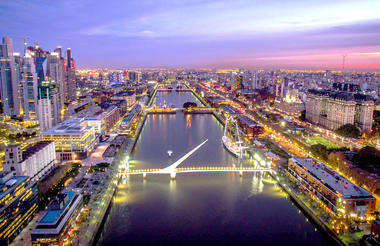
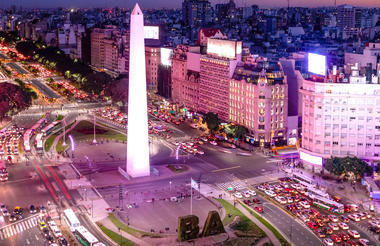
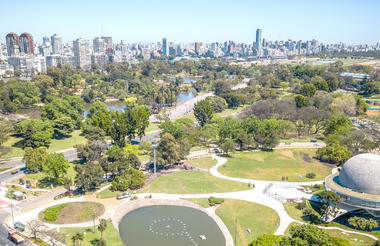
Colonia del Sacramento is located in southwestern Uruguay, separated from Argentina’s capital of Buenos Aires by the Rio de La Plata. The historic downtown area (Barrio Historico) of this charming city (often simply referred to as ‘Colonia’) has been inscribed on the UNESCO World Heritage List for its fine collection of colonial-era buildings. Begin at the Porton de Campo, the impressive city gate dating back to 1745, and then wander through the romantic Historical District, stopping in at some of the city’s fine museums along the way (such as the Museo Municipal and Museo Portugues). Climb the 19th-century lighthouse (Faro) for great views of the city, before sampling some of the city’s renowned local fare (Asado) and checking out some local music (such as 'candombe' bands).



Resting in the foothills of Argentina’s Andes Mountain Range, Mendoza has a rich gastronomic heritage, and produces some of Argentina’s most exceptional wines and olive oil. Gourmands can participate in tours and tastings at the many wineries and sample delicious local cuisine at the laid-back cafes. The city also boasts a number of historic attractions, most notably the Museo Fundacional which displays the town’s progress through human evolution, and the Museo Historico General San Martin which honours Jose de San Martin, the general who liberated Argentina from the Spanish. Other highlights include: charming, well-kept parks; bustling, fountain-adorned plazas; and the opportunity for picturesque hiking, skiing and rafting in the nearby Andes. Several exquisite churches and art-deco architecture add to the town’s landscape.



The name Mendoza is synonymous with wine. Surrounded by breathtakingly beautiful Andean scenery, the Mendoza Wine Region is known for its vast vineyards, a wide variety of exceptional wines, and spectacularly majestic scenery. The landscape features desert terrain and mountain vistas interspersed with lush Visitors can look forward to sampling the regions vast selection of world-famous, award-winning vintages including a variety of malbecs at an endless array of fantastic wineries. Other popular activities include: white-water rafting, rock-climbing, skiing, horse riding and other adventures in the nearby Andes. Don’t miss the opportunity to hike several magnificent peaks on the Cordon del Plata reaching over 6000 metres above sea level and take on the highest peak in the Americas, Mt Aconcagua.



Resting in the foothills of the Andes in western Argentina, Potrerillos is a district of the Luján de Cuyo Department in the province of Mendoza. The district features some exceptional natural scenery and serves as a popular eco-tourism destination with a range of outdoor activities on offer including canoeing, hiking, fishing, white-water rafting, windsurfing, kayaking, and camping. The lovely Mendoza River meanders past the eastern edge of the town of Potrerillos and discharges into the exquisite trout-filled Potrerillos Dam. The banks of this dam and river are fringed by an array of cabins and inns, providing a peaceful retreat away from the city of Mendoza which lies only 60 km to the south. Must-see sights of the surrounding area include: the small but charming Vallecitos ski resort and the healing hot spring waters of Cacheuta.



Resting in a valley surrounded by the snow-capped Andes and the Chilean Coast Range, Chile’s vibrant, cosmopolitan, the capital city of Santiago is famous for its beautiful parks, a wealth of historical attractions, and exciting arts and music scenes. The Cerro San Cristobal Park, the largest green space in the city, lies on a hill and is reached by a funicular ride. It offers visitors stunning sweeping views of the city, as well as a picturesque botanical garden and two huge swimming pools. The colonial Plaza de Armas, in the old town centre, is a delight to explore with its numerous Neoclassical buildings and museums, most notably the home-turned-museum of renowned poet Pablo Neruda. Visitors can also look forward to wonderful live shows, concerts and exhibitions.
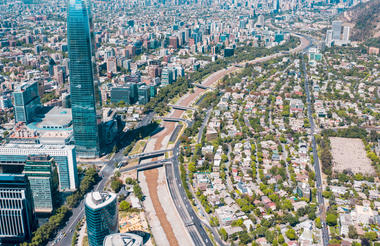
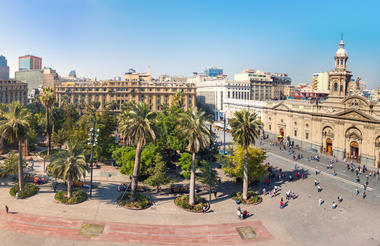
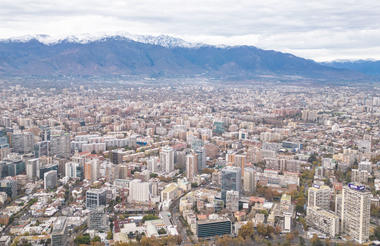
Resting just 1.5 hours from the capital city of Santiago, Valparaiso (or Valpo as it has been affectionately dubbed by locals) is one of a string of coastal resort towns on Chile’s magnificent central coast. What sets Valparaiso apart from its neighbours is its charming collection of ramshackle, colourful houses spilling chaotically down its 45 steep 'cerros' (hillsides). While Valparaiso lacks white-sand beaches, it certainly makes up for it with its endlessly charming quirky character, its thriving street art scene, its fantastic funicular railway system and its spectacular seaside views. To see Valparaiso at its bohemian best, visit at the end of December during its week-long carnival festivities which typically ends in a jaw-dropping New Year’s Eve spectacle of fireworks.
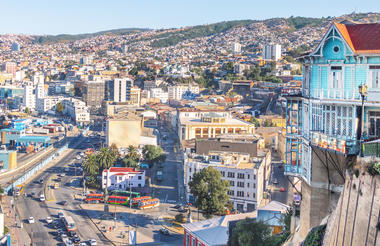
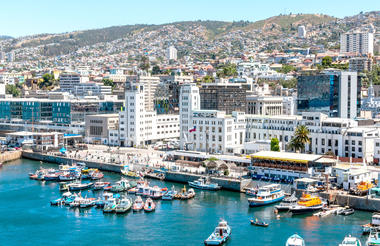
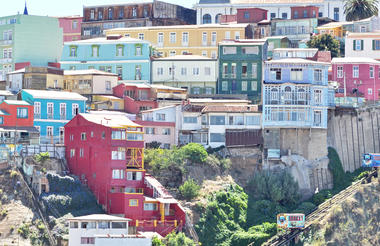
The small town of San Pedro de Atacama is a scenic oasis in the Atacama Desert, surrounded by the imposing volcanic peaks of the Chilean altiplano and located close to several major archaeological and natural attractions. The fascinating ancient sites of Tulor and Quitor, the enthralling Atacama Salt Flat, the jaw-dropping turquoise Altiplanic Lagoons, and the other-worldly Tatio Geysers all lie nearby, and as a result, the village has become a significant tourist destination. Despite its small size it encompasses a wide range of restaurants; however, it is also known for its ‘western feel’ and retains an old-world charm. History enthusiasts will enjoy a visit to the atmospheric 17th-century Iglesia San Pedro. However, it is really the breathtaking surroundings that make this destination special.
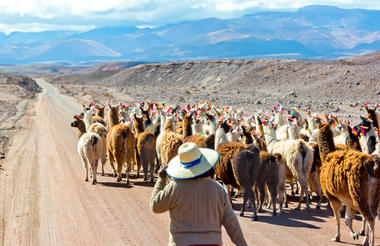
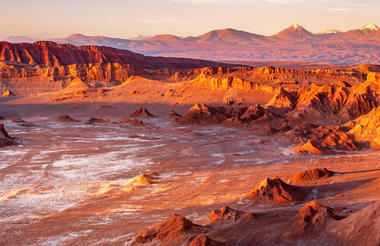
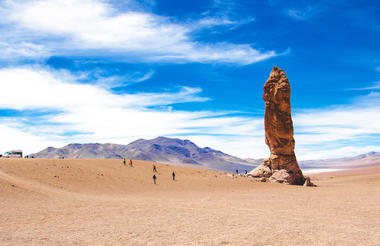
Villamar Mallcu is located in the remote vast plains of Southwestern Bolivia, on the northwestern edge of the Cordillera de Lipez. The striking landscapes are characterised by strange volcanic rock formations, bubbling turquoise hot springs and multi-coloured sands, and are home to ancient rock paintings (Pinturas Rupestres). The small town boasts a vibrant craft market selling an incredible collection of finely made artisanal crafts. The Andina Eduardo Avaroa National Fauna Reserve is a short drive away, offering the chance to see flocks of pink flamingos, herds of vicuna grazing the Altiplano, 80 species of birds, as well as the shy viscachas and Andean foxes.
Chuvica is a small settlement in Bolivia, set on the southern edge of the Uyuni Salt Flats, the largest salt lake on earth. This little town serves as a base for tours and expeditions of the extraordinary natural area, which also boasts spectacular rugged hills strewn with desert vegetation, making it an ideal destination for photographers and outdoor enthusiasts. The salt lake, often nicknamed ‘the largest mirror in the world’, offers an unusual and phenomenal experience up close with nature. Spreading over more than 10,000 square kilometres, backed by striking mountains, and decorated by exquisite patterns made by the salt, this is one of the country’s top must-see attractions. Set between Bolivia, Chile, and Argentina, this location is also ideal for travellers wishing to explore the fascinating neighbouring countries.



Surrounded by the peaks of the Andean Plateau and overlooked by the 6402m Mt. Illimani, La Paz is a truly breathtaking city whose buildings sprawl across the surrounding canyon, reaching altitudes of up to 4100m. While the sight of the city is reason enough to visit, La Paz holds a number of attractions sure to keep tourists fascinated. Take a walk along Calle Jaen, a colonial street lined with museums, explore the city's cathedrals or wander through some of the colourful markets, including the 'Witches' Market' where llama foetuses and dried frogs can be found for sale.








